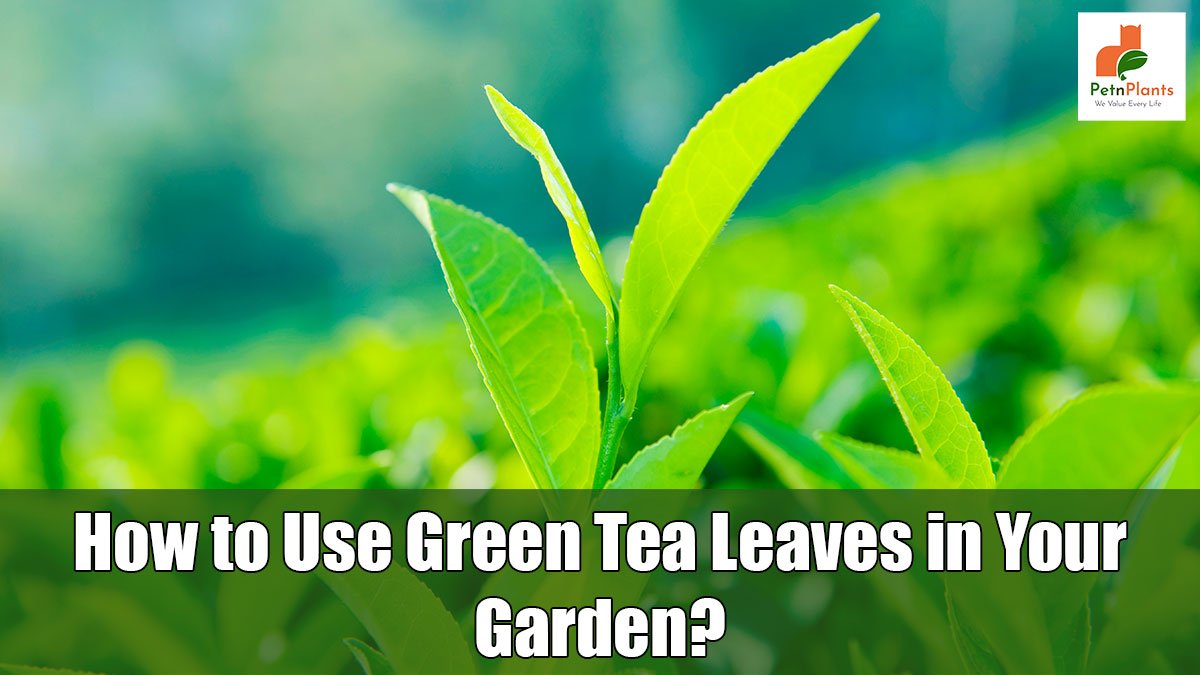How To
Latest
Pet Care
How to Groom Your Dog at Home with the Right Dog Grooming KitMarch 19, 2025
We Value Every Life

Green tea is more than just a delicious beverage; it has many health benefits, and its leaves can also be used in the garden to promote plant growth and ward off pests. In this blog post, we’ll explore how to use green tea leaves in the garden and why they can be beneficial for your plants. From composting to mulching, you’ll learn five different ways to utilize green tea leaves in your outdoor space. Keep reading to discover how you can make the most of green tea for your garden’s health!
Green tea is made from the leaves of the Camellia sinensis plant. The leaves are dried and then brewed to create tea. Green tea has been consumed for centuries in Asia and is now becoming popular in the Western world.
There are many health benefits associated with green tea, including improved brain function, fat loss, a lower risk of cancer, and reduced inflammation. Green tea can also be used as a natural pesticide and fertilizer in your garden.
To use green tea leaves as a natural pesticide, simply brew a pot of green tea and let it cool. Once it’s cooled, pour it into a spray bottle and spritz plants that are infested with pests. The caffeine in green tea will kill the pests.
To use green tea leaves as fertilizer, add them to your compost pile or till them into the soil around your plants. The nutrients in green tea will help your plants grow healthy and strong.
Different types of green tea exist, each with flavor profiles and health benefits. Here are some of the most popular varieties:
Green tea has a lot of benefits, but there are also some downsides to using it in your garden. Here are some pros and cons of green tea:
Pros:
Green tea leaves can be used in your garden in a few different ways. For example, you can use them as mulch or compost. You can also add them to your compost pile. Green tea leaves will help to aerate the soil and improve drainage.
Another way to use green tea leaves in your garden is to make a natural insecticide. To do this, simply steep some green tea leaves in water for a few hours. Once the water has cooled, spray it on your plants to keep pests away.
Finally, you can also use green tea leaves as fertilizer. Simply brew a pot of strong green tea and then pour it around the base of your plants. The nutrients in the tea will help your plants to grow healthy and strong.
Green tea leaves can be used in many recipes, including soups, stir-fries, and even desserts. Here are some ideas to get you started:
Green tea leaf soup is a popular dish in many parts of Asia. It is typically made with chicken or beef broth, and the green tea leaves are simmered in the broth until they are soft. The soup is then flavored with ginger, garlic, scallions, and other seasonings.
Green tea leaves can be used as a seasoning in stir-fries. They add a slightly bitter flavor that pairs well with savory ingredients like soy sauce and oyster sauce. To use green tea leaves in a stir-fry, simply add them to the pan along with the other ingredients and cook until they are wilted.
Green tea leaves can also be used to make sweet desserts. One popular way to do this is to infuse them into simple syrup. This syrup can then be used to flavor cakes, cookies, or even cocktails. To make green tea-infused simple syrup, simply simmer equal parts sugar and water until the sugar has dissolved. Then remove from heat and steep green tea leaves in the hot syrup for 5 minutes. Strain out the leaves and store the syrup in a jar in the fridge for up to 2 weeks.
Green tea leaves can be a great natural addition to your garden, providing many benefits, such as improving soil quality and reducing plant diseases. Whether you’re looking for a way to boost the health of your plants or just want something new and different in your garden, green tea leaves are worth considering. So why not give this ancient remedy a try? You may be pleasantly surprised at the results!
0